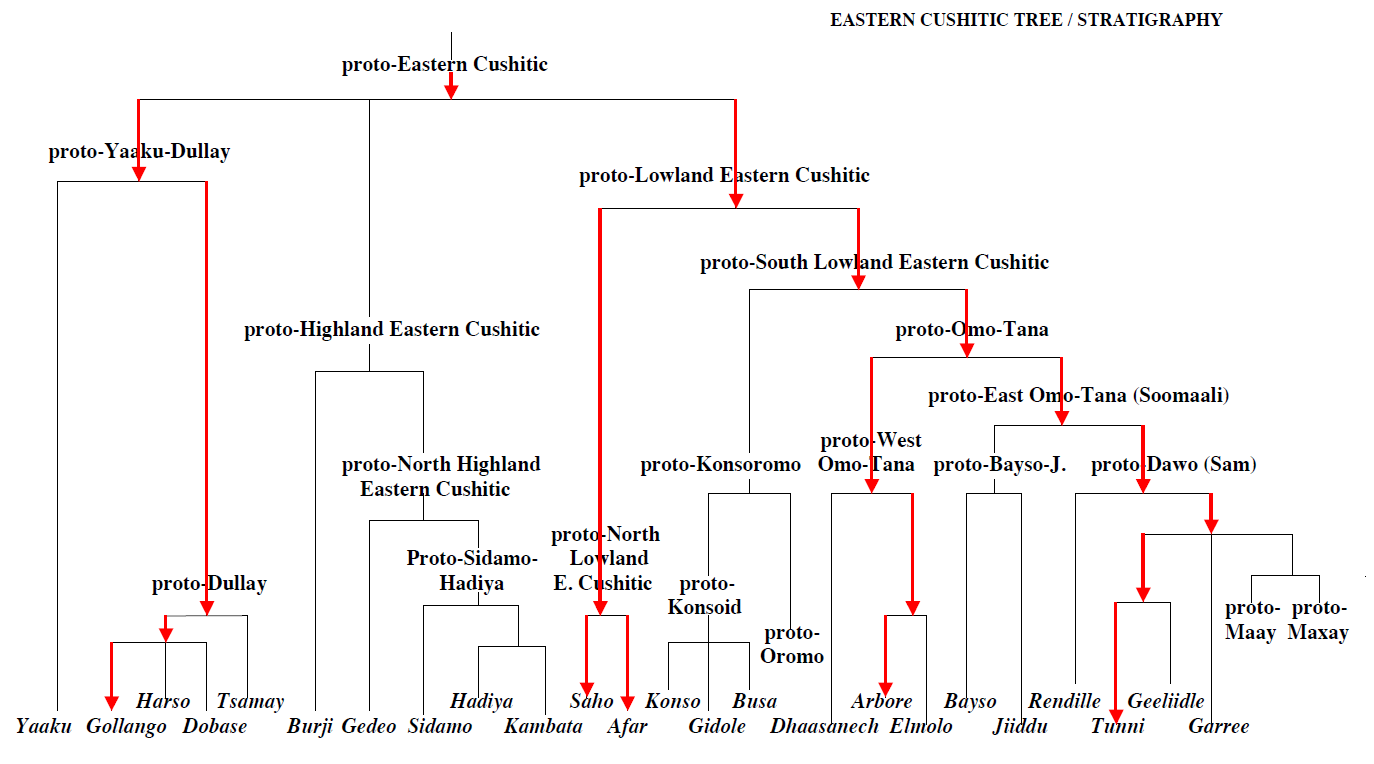I've only skimmed all this and will simply add a few key points and leave this be.
1) Afaan Oromo and the Soomaali languages are not in any way the same or mutually intelligible. They are totally distinct languages:
Af Maay, Tunni, Jiddu and the rest are like Portuguese would be to Spanish when relating to Af Maxaa whereas something like Oromo would be like English is to German. I'm actually being generous there as English and German boast a time divergence of about ~2,000 years whereas the Soomaali group and the Proto-Konsoromo group didn't share an ancestor until about ~3,000 years ago or a bit more.
The two languages share many cognates in terms of basic vocabulary,
as do many East-Cushitic languages, but mutual intelligibility is basically non-existent. Not even the most advanced speaker of any of the Soomaali languages would ever grasp what an Oromoo speaker of any of the Oromoo dialects was saying unless they were in consistently close in terms of geographic proximity and essentially borderline bilingual. You'd maybe pick up on some words and be like "Oh!" from time to time at best if you listened very carefully or read the sentences but that's about it. Like an English speaker interacting with German or Norwegian.
2) To my knowledge, there are two "Barbarias" in the Periplus. One that is basically from Southeastern Egypt (near Berenice) down to around the Eritrean coast which corresponds to the northern half of the "Coastal Cushite" phenomenon; Bejas, Tigres (Ethiosemitized Bejas), Sahos and Afars. Then there's one that goes from the Babl al-Mandab seemingly until "Opone" (Xaafuun) and corresponds essentially with the Northern Somali coast and Somalis.
For whatever reason, it doesn't seem to me that the Greco-Romans included Koonfur within this term. But we know via linguistic study of the Soomaali languages historically down there, including Af-Maxaa, and via archaeology that it's plain that the only groups historically living there other than some native and now gone Hunter-Gatherers were the Soomaali speakers. Oromo speakers or any other groups appear only as adstrata, not any kind of substrata.
During the Middle-Ages the definition of "Barbar" land in the eyes of the Arabs, who were more intimately connected with Coastal Cushites as fellow Muslims, extended to include the entire Somali coast. I've done this on this site before and plan to make a post about it on AM someday, but if you map all of the Arab geographers and even later Greek geographers like Cosmas' (6th century CE) definitions of Bilad al-Barbar, Bilad al-Zunuj and such it's honestly remarkable how well the borders more or less correspond with the modern Somali Peninsula and it's very plain that from around the Bab al-Mandab down to around the mouth of the Jubba/Shabeelle to a little beyond it was Somali inhabited lands. Those camel and fat-tailed sheep herders Battuta describes.
Oromos had nothing, as far as I know, to do with all of this until their Early Modern expansions.



